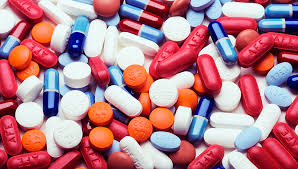Serving Uganda’s Key Populations and Priority Populations with Diligence and Dedication: A Vignette Project- Part (3)
Community Systems Strengthening (CSS) and Integrated Service Delivery (ISD)
These recent years have seen organizations addressing
equity, intersectionality, inclusivity, diversity of persons and needs,
dignity-affirmation, and regard for respectful conduct. We are increasingly
addressing setting contexts for empowering each other and promoting humane
conduct. These are themes that have evolved over time, and they
are the operative words that make the SDGs achievable. The
SDGs relate to the reduction of inequalities at the heart of all approaches to guide and drive action
in every country and community. A
comprehensive framework
is needed for transformative actions to confront
these inequalities and, more broadly, respect, protect and fulfil human rights
in the HIV/TB/Malaria
response. By reducing the inequalities driving the AIDS epidemic, we can close
the gaps for HIV prevention, testing, treatment, and support by 2025 and put
the world back on course to end AIDS by 2030.
These themes prompt quite several questions: how is
our organization talking about social-economic rights in the same breath as we
address the healthcare needs of the beneficiaries? This is what it means to work
within the care continuum spectrum.
How are we aligned with the Global Fund funding
models? Are we promoting participation by the organizations we work with to
contribute to further engagement in activities that contribute to the
eradication of HIV/TB/Malaria by 2030 integrating COVID-19 Prevention?
The
new Global AIDS Strategy (2021–2026) seeks to reduce the inequalities that
drive the AIDS epidemic and put people at the center to get the world on-track
to end AIDS as a public health threat by 2030. Therefore, what are some of the funding goals or
models expected of organizations? Some examples include Community
Led-Monitoring (CLM); Community of Practice (COP); Resilient and Sustainable
Systems of Health (RSSH); Public-Private Mix (PPM); COVID-19 Response and
Recovery; Social Support and Protection Networks (SSPN); Integrated Service
Delivery (ISD); and Moving toward the three zeros (zero new HIV infections, zero AIDS-related
deaths and zero discrimination). All these efforts
are to keep people at the center and aim to unite
countries, communities, and partners across and beyond the HIV/TB/Malaria response to take
prioritized actions to accelerate progress towards the vision of zero new HIV
infections, zero discrimination and zero AIDS-related deaths. The efforts seek to empower people
with the programmes and resources they need to exercise their rights, protect
themselves and thrive in the face of HIV/TB/Malaria integrating COVID-19 Response and
Recovery.














Comments
Post a Comment